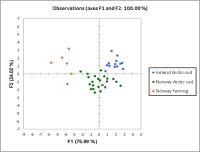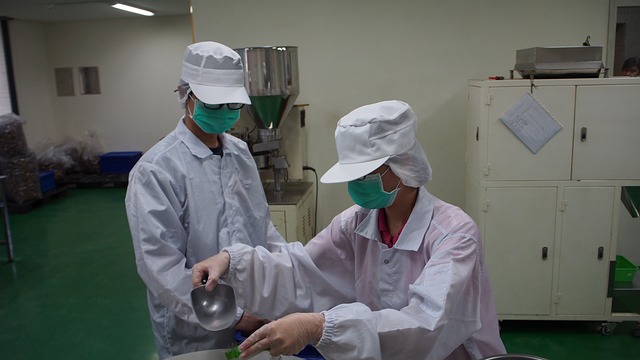How food products are transported has a significant effect on both food safety and shrink. By understanding transportation options and leveraging new technologies, food logistics business can reduce these risks and better control expenses. Following are seven strategies to help you reduce your costs, minimize food shrink and support food safety.
1. Exercise Flexibility When Choosing Modes of Transportation
According to the U.S. Department of Agriculture, an estimated 31% of U.S. food product is lost to waste.[1] When handling shipments of raw or cold foods, ensuring the deliveries happen on time is critical for avoiding loss due to spoilage.
Being smart about your transportation choices can help combat this issue. For example, while shipping food freight by sea is much cheaper than transporting it by air, sea transportation takes significantly longer and may result in more food shrink caused by spoilage, resulting in substantial losses. Alternative options include rail transportation with refrigerated cars or refrigerated food trucks. You can also expedite specific portions of shipments when a buyer only needs part of the shipment urgently, while shipping the remaining product using a less expensive mode of transportation with a longer delivery time.
2. Consolidate Shipments When Possible
Choosing a provider that offers less than truckload (LTL) shipping is one way that you can ship lower weights at a more affordable cost.[2] Another option to consider is consolidating shipments from multiple buyers when possible in full truckload (FTL) shipping, which can further reduce your transportation costs. Review the locations of your buyers to determine whether you can consolidate several shipments into one load to cut down your total transportation costs.
3. Engage in Smart Truck Route Planning
Empty trucks can quickly drain your resources and result in reduced profits. When possible, plan truck routes to handle collections and deliveries in the same route. You want to plan your truck routes so that you don’t have empty containers along large portions of trips. Smart truck route planning helps maximize both your driver and vehicle utilization by reducing the time vehicles spend empty while in transit.
4. Ensure Foods Being Transported Are Compatible
As a freight broker, you are required to comply with all applicable laws and regulations as a condition of your license and your freight broker bond.[3] One of the regulations you need to understand is the new sanitary food transportation rule under the FDA Food Modernization Safety Act.[4]
Under this rule, freight brokers are treated the same as shippers and have multiple duties, including ensuring that the carriers you use meet all regulatory requirements. One of these requirements is to ensure that raw foods are separated from other food products during transit. Make sure you understand which foods are compatible and that the trucks your carriers use have the required equipment. Using tech tools for truck route planning can help you prevent incompatible foods from being mixed while they are in transit, which could result in penalties and potential license and bond violations.
5. Implement Item Location Forecasting
Item location forecasting helps ensure that the right foods are being shipped to their correct destinations. When you include brands, categories and families of products, it can assist with your tactical and strategic planning. When products are delivered to the wrong place, money can be lost through spoilage, fines or additional transportation costs.
Item location forecasting tools also help ensure that the off-loading sequence of the shipments you manage are conducted by compartment. This helps businesses plan how the goods should be subdivided into trailer compartments. Ensuring carriers are following the correct loading and unloading of food products can also help ensure that they are complying with their duties under the food safety rule. When you synchronize how foods flow across the supply chain, you can realize reduced transportation costs.
6. Take Advantage of Big Data
Food products flow across the globe, generating vast stores of data. Logistics companies must track origin and destination information, shipment sizes, locations, weights, traffic, driving patterns and more to ensure shipments get to where they need to be quickly and at the lowest cost. When you employ big data in logistics, it can help you predict or avoid potential bottlenecks.
Many 3PLs and shippers already rely on data to drive decision-making. A 2021 Third-Party Logistics Study found that most use data-driven approach technology to plan for demand (83%), operations (78%) and capacity (61%).[5] Using big data in your logistics operations can help improve transparency while maximizing your resources. Automated management systems can help by automating routine tasks while controlling fleets and scheduling shipments.
7. Harness Automation
Robotics and automation can offer end-to-end tracking of products as they travel through the supply chain. In addition, they can lower labor expenses and enhance productivity. Consider using automation-guided vehicles and automated container loading and unloading. These tools can increase productivity, strengthen the safety of the environment with attached warning sensors and reduce both labor and operating expenses.[6]
In an increasingly competitive environment, food logistics companies must take proactive steps to reduce and control costs while ensuring food safety. By implementing these strategies, you can streamline your processes and realize increased profits without sacrificing safety.
References:
[1] Buzby, Jean C., Hodan F. Wells, and Jeffrey Hyman. The Estimated Amount, Value, and Calories of Postharvest Food Losses at the Retail and Consumer Levels in the United States, EIB-121, U.S. Department of Agriculture, Economic Research Service, February 2014.
[2] Segal, Troy. Less-Than-Truckload (LTL). Investopedia.
[3] Lance Surety & Associates. The BMC-84 Bond: Complete Guide to Bonding for Freight Brokers. Accessed on August 22, 2022.
[4] U.S. Food and Drug Administration. Summary: Sanitary Transportation of Human and Animal Food (Final Rule), March 26, 2018.
[5] Infosys Consulting. 2021 Third-Party Logistics Study: The State of Logistics Outsourcing.
[6] Jagtap, S., Bader, F., Garcia-Garcia, G., Trollman, H., Fadiji, T., & Salonitis, K. (2020). Food logistics 4.0: Opportunities and challenges. Logistics, 5(1), 2.























